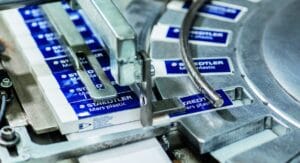
A contract with a handshake is valid
Managing director Tina Gerfer of Wilhelm Rasch Spezielmaschinenfabrik has modernized the company and successfully guided it through difficult times.

It is ultra-light, extremely stable and feels very comfortable – no wonder that brand manufacturers such as Coca-Cola, Absolut and Procter & Gamble showed interest in the paper bottle from Paboco early on. The Carlsberg Brewery Group has also been working on the Fibre Bottle project for years and recently started a large-scale practical test. The first feedback from consumers is now available.
In the non-food segment, consumers will probably be able to reach for the paper bottle as early as 2023. „Next year, the Procter & Gamble brand Lenor is expected to be launched in the Fibre Bottle for the first time, but initially only in Northwest Europe,“ says Michael Michelsen, Commercial Director at Paboco. In 2015, the Paper Bottle Company (Paboco), a joint venture between BillerudKorsnäs and Alpla, started the project to produce sustainable fibre bottles and has been working on optimising them ever since. The goal: a completely bio-based paper bottle. „The Paper Bottle still consists of 85 per cent paper and a thin PE layer, which, however, comes off easily in waste paper processing, can be sorted out and recycled. PE, however, does not work well with carbonated drinks. That’s why we still use a PET coating here that is a little thicker,“ says Michelsen.
The Carlsberg brewery is now going one step further: the bottles for its consumer test are coated with PEF (polyethylene furanoate), a bio-based polymer that has similar properties to PET. The Fibre Bottle 2.0 is thus the first beer bottle made of sustainably produced wood fibres and PEF that is already almost completely bio-based and fully recyclable. The coating with the plant-based polymer, which was developed by Carlsberg’s partner Avantium, is an important milestone for the Fibre Bottle, the company says. The bio-based polymer acts as a highly effective barrier between the beer and the outer fibre shell. It protects the taste and is said to retain the beer’s carbon dioxide better than conventional PET. The biopolymer is also compatible with PET recycling systems and can also be broken down in nature.

Carlsberg recently launched a large-scale market test with an initial 8,000 Fibre Bottles. In the eight Western European markets of Germany, Denmark, Sweden, Norway, Finland, the United Kingdom, Poland and France, selected customers were able to take a close look at the innovative beverage packaging. Their experiences with the paper bottle will then be incorporated into the next generation of packaging design.
So far, feedback from customers who have received sample bottles has been overwhelmingly positive, according to a Carlsberg company spokesperson. „Consumers have been very curious about how the bottle feels in their hand and how the drink inside tastes, and they have been pleasantly surprised that the taste and freshness of the beer are equivalent given the completely different look and feel of the bottle. A special experience is that the coldness of the drink is not fully felt in the hand or on the lips – as would be the case with a glass bottle or can – due to the insulating properties of the wood fibres.“ In the next few weeks, Carlsberg is expecting the final feedback from Denmark and the UK. Only then will all the data from the eight participating markets be evaluated.
The current prototypes are the Generation 2.0 design, which includes the PEF coating and a new base to improve the bottle’s stability. Earlier this year, Paboco had already announced its Generation 3.0, which will then also feature a fibre-based lid and closure. „So 2022 marks an important milestone for Generation 2.0, and our next steps will focus on turning the Carlsberg Generation 3.0 vision into reality,“ says Kasper Emil Jakobsen, External Communications Manager at Carlsberg.
According to the company, Generation 2.0 of the Fibre Bottle already performs better in the life cycle assessment than disposable glass bottles, and Carlsberg has even greater ambitions for the subsequent Generation 3.0: Then the paper bottle should cause up to 80 per cent fewer emissions than conventional disposable glass bottles.

Managing director Tina Gerfer of Wilhelm Rasch Spezielmaschinenfabrik has modernized the company and successfully guided it through difficult times.
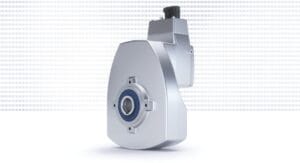
From primary packaging to final packaging, electric drives play an important role. With a broad portfolio, Nord Drivesystems supports customers.
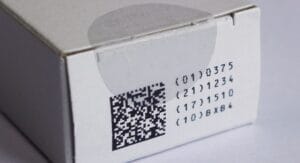
Labels offer many functions which can get lost due to label removal. PTS assesses labels and cardboard for durability and tamper evidence.
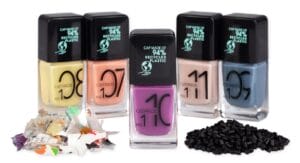
Packaging for decorative cosmetics is very special. The Forum Rezyklat calls for the recyclability of packaging to be taken into account when designing it.
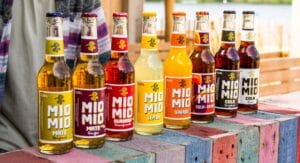
According to a survey conducted by Aktionsforum Glasverpackung 2024 is set to be a highly innovative year for glass packaging.

Sustainability is part of Weleda’s identity. IWK is also contributing to this with its new flexible packaging line for many natural cosmetic products.
